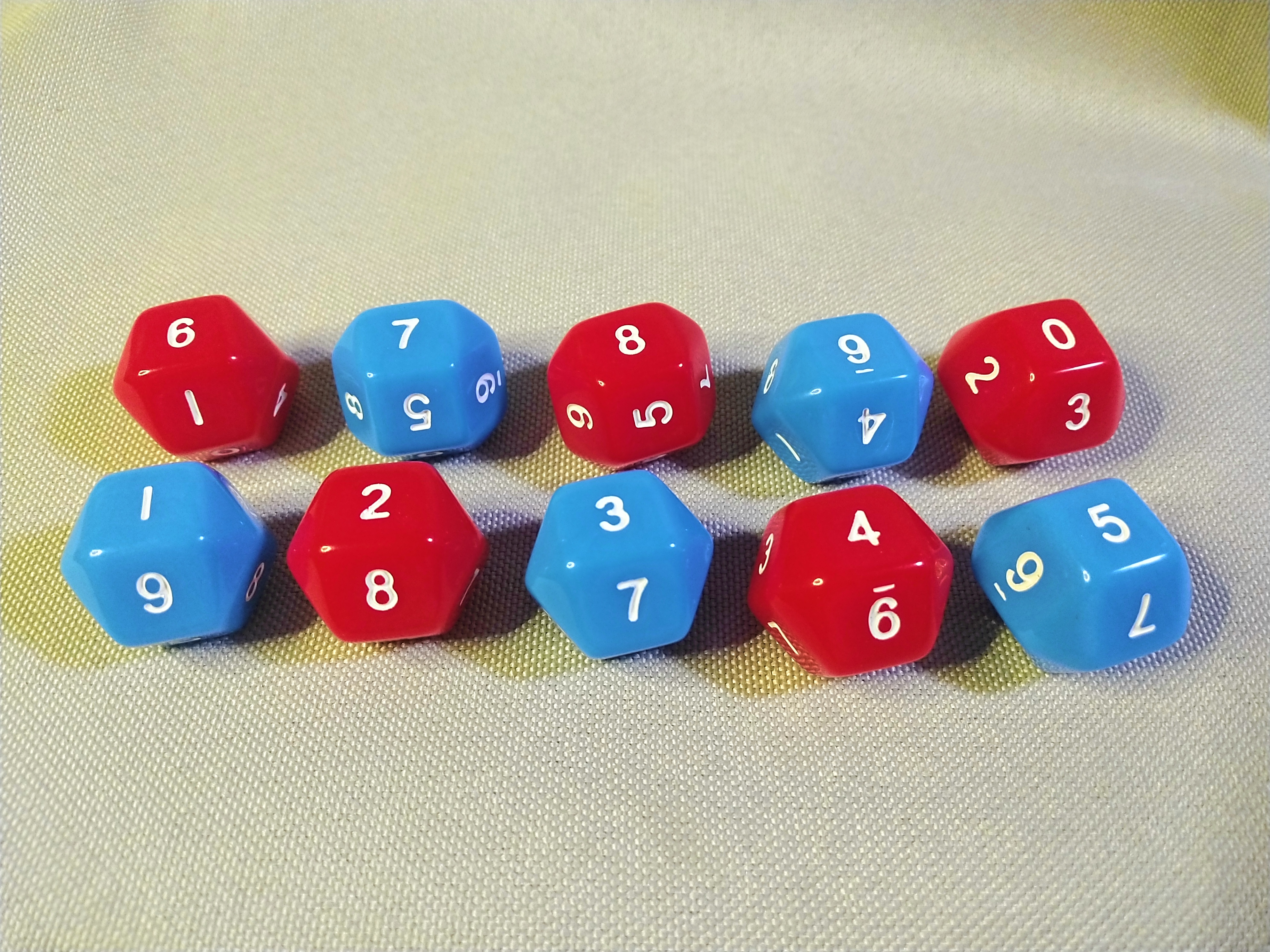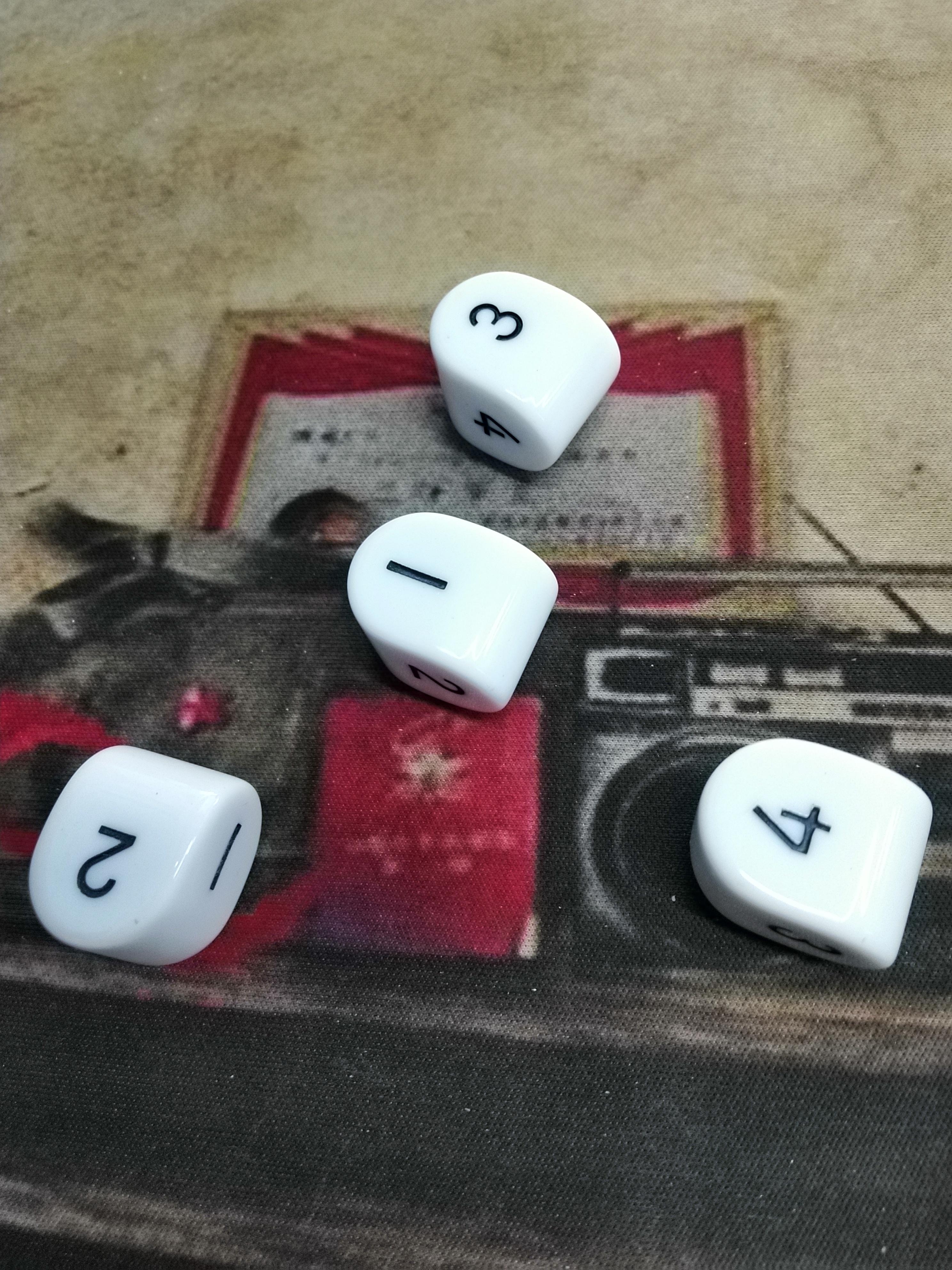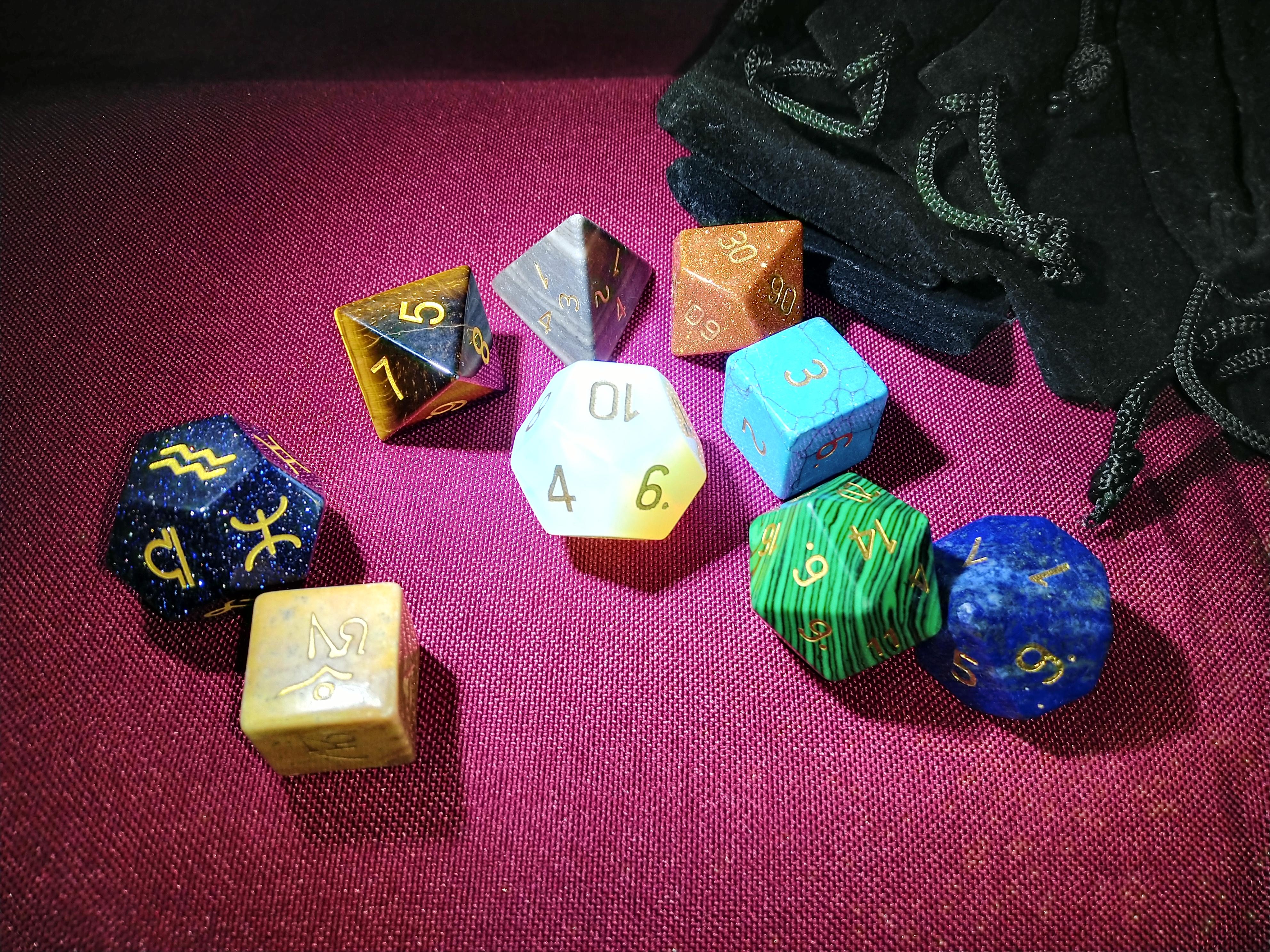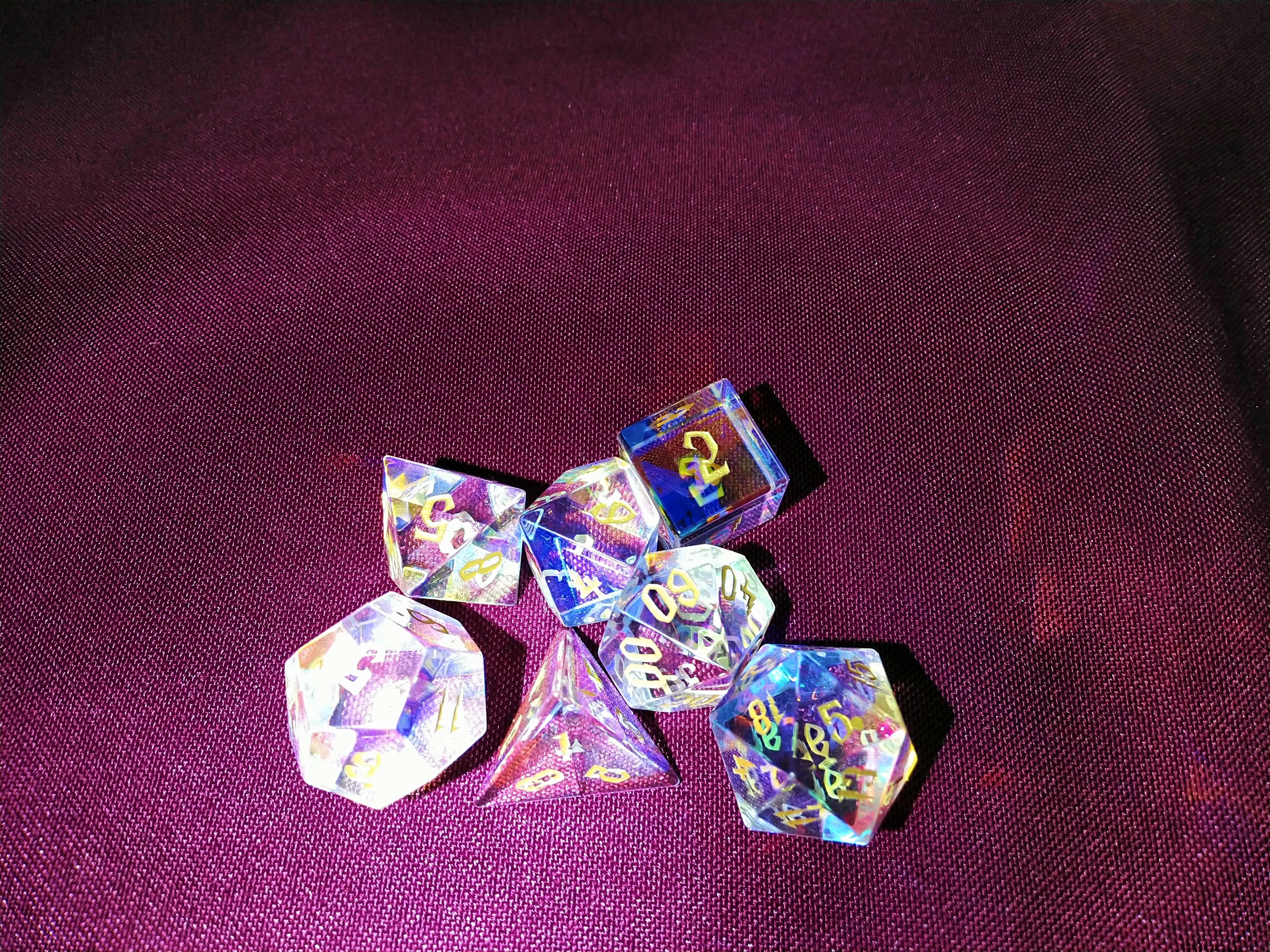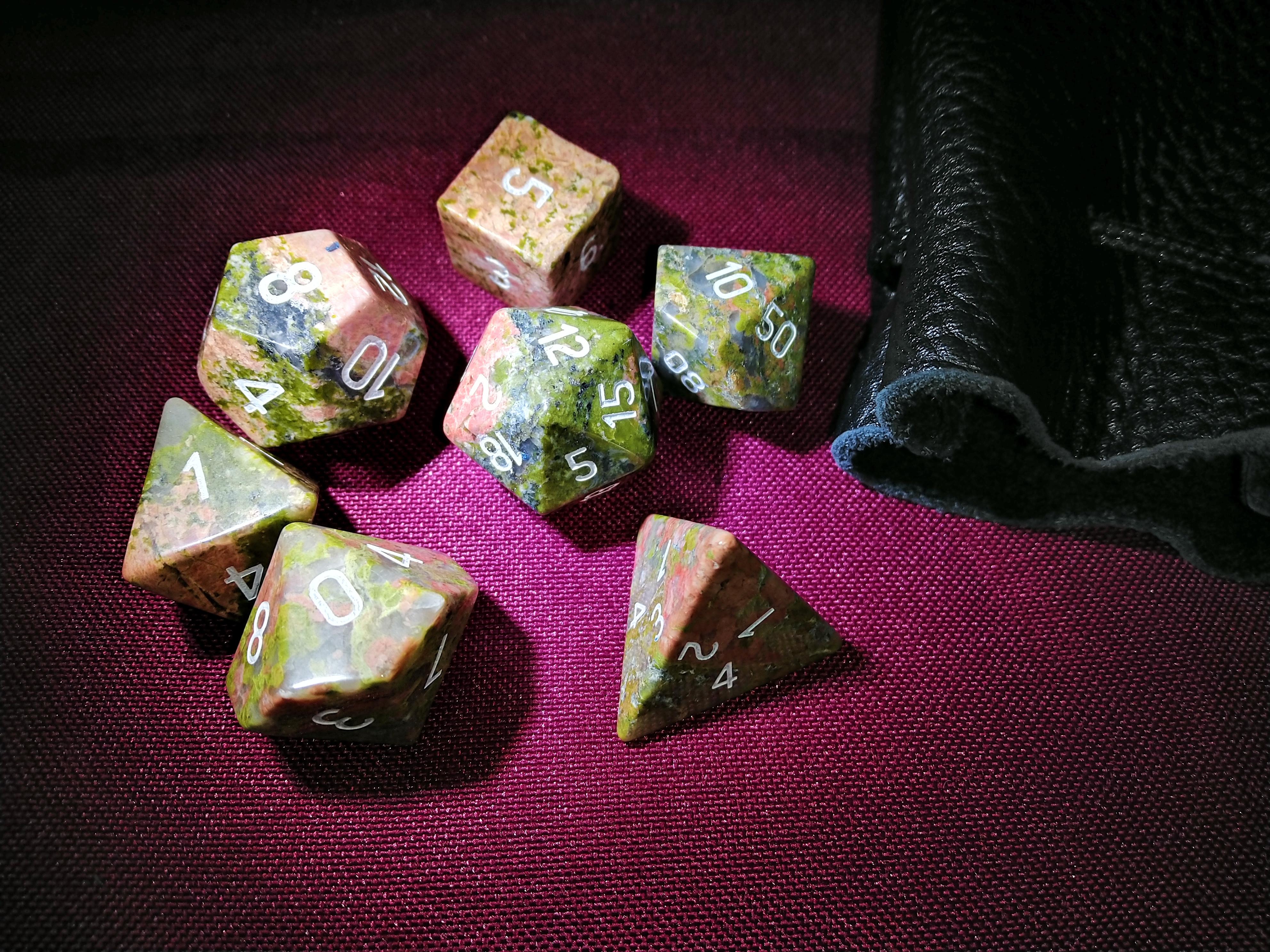Temptation abounds...
Temptation #1: Carved aventurine percentile dice inscribed in gold inked Chinese script.
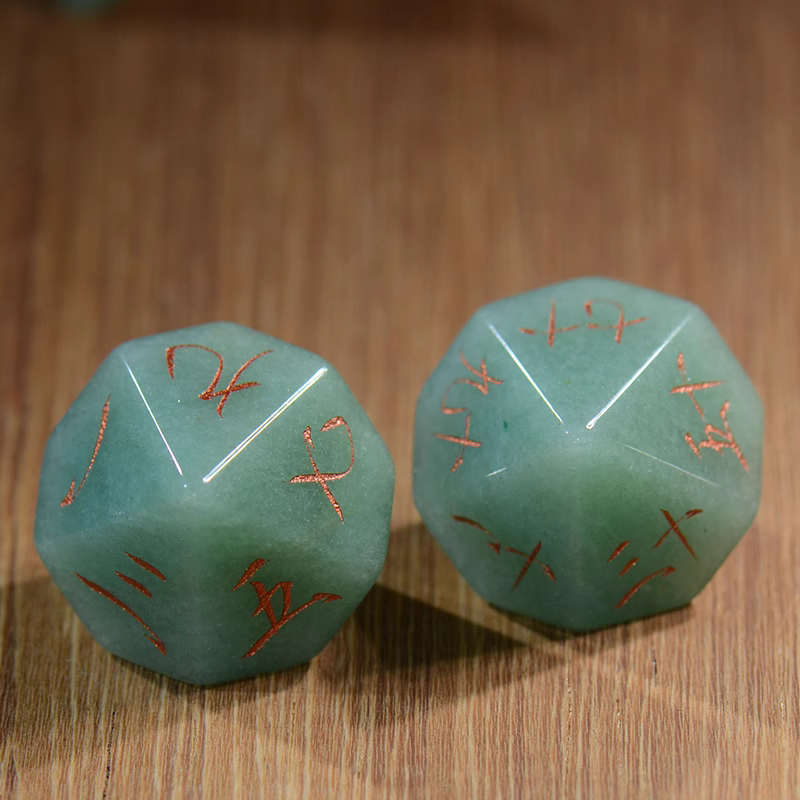
Temptation #2: A full gaming set carved from lapis lazuli inscribed with cuneiform numerals in gold except one face which has the Egyptian "all-seeing eye" emblem.
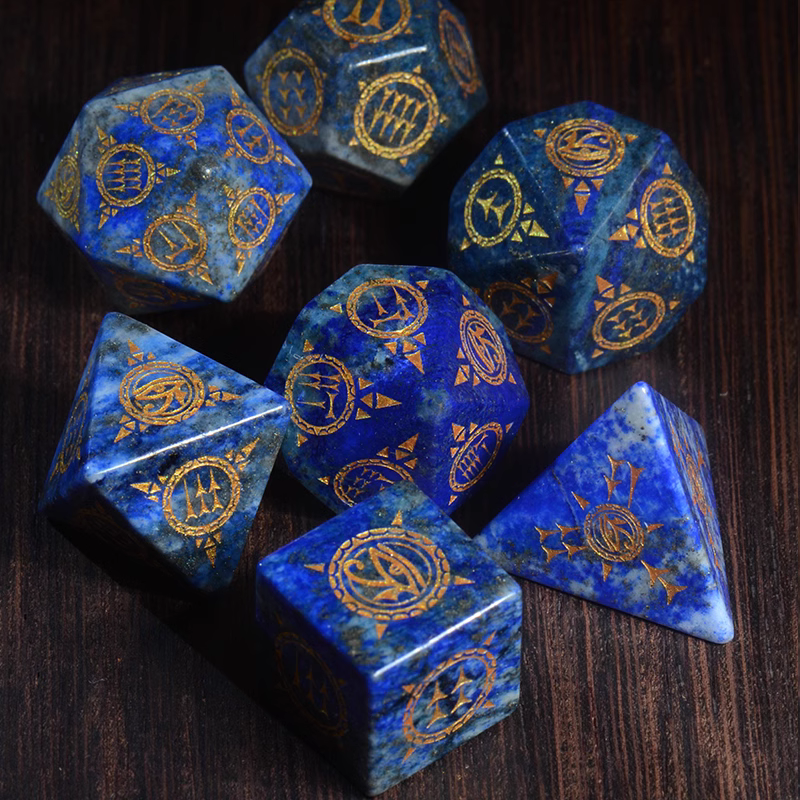
When I want to roll dice openly but don't want the players to know what I rolled.

When it's time to put fear in the hearts of your players on a damage roll...
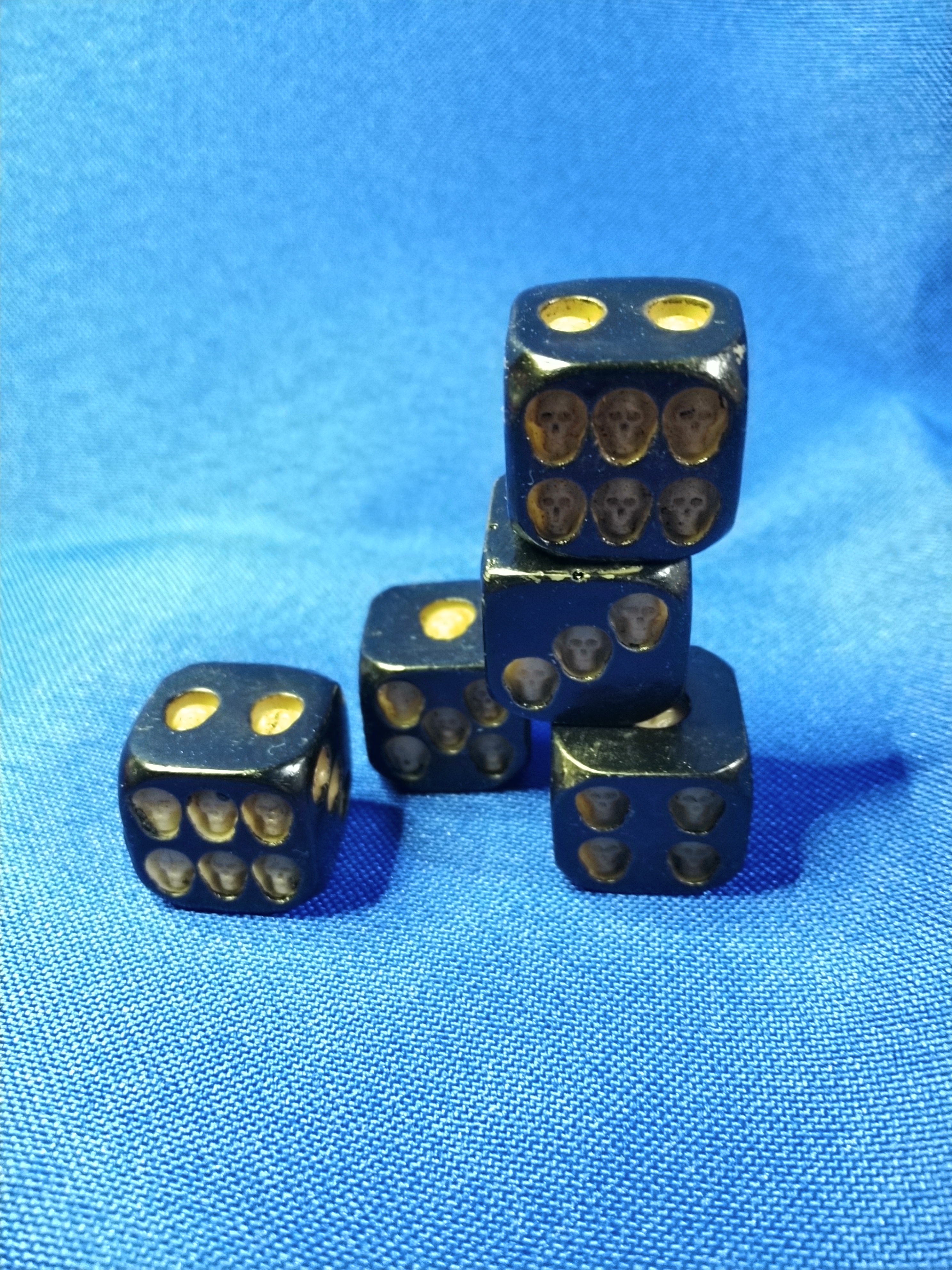
Assorted Divination Dice
These are not, strictly speaking, gaming dice, but I make use of them in gaming for in-character purposes (and sometimes when I face idea blocks as a GM: using them to foster ideas like I might use a tarot deck).
Tibetan Mo Divination
These dice are a hold-over from Tibetan shaman practice incorporated into Tibetan Buddhist tradition. I have three sets of them:
-
A wooden set that has the Tibetan symbols writ large and in small beside each their Chinese translation.

-
A brass set that has just the Tibetan symbols. (I later coloured in the symbols so that it was easier to distinguish first and second.)

-
A "literal gem dice" set: one in "egg yolk opal" (literal translation), and the other in yellow jade.

Yijing Divination
These dice will look unusual to people who have a preconceived notion of how the Yijing (I-Ching) are consulted. The ways most people know of are the "yarrow stalk" technique, the "three coins" technique, and, if especially familiar from afar, perhaps the "bamboo strip" technique. But there are many ways that the Yijing are consulted that have developed over the millenia. In addition to the aforementioned techniques there's also tiles (similar to the bamboo strips) and my examples here: dice.
I have two sets of these dice:
-
A wooden set that has the Yijing hexagrams written by name, not by the six broken/whole line sets that people outside of China are most familiar with.

-
An all-metal set ("bronze", but not really made of bronze, just coated with a bronze layer) that is again done by hexagram name.

In both cases and extra six-sided die is used to determine the "moving line" of the hexagram. (Yarrow stalk and coin methods can have zero to six moving lines. Dice methods will have one always. Slip and tile methods will never have any.)
